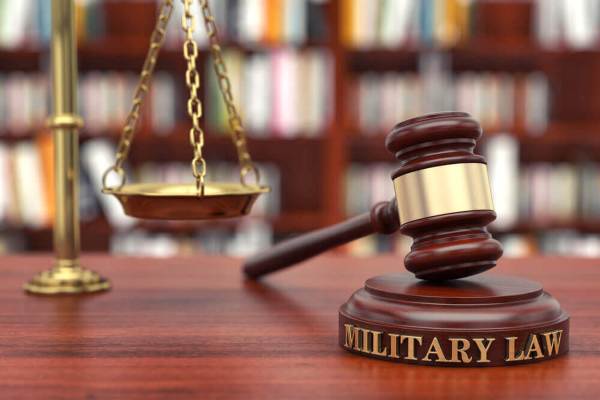Army law in India has a rich and complex history, deeply rooted in the advancement of administration and the legal structure of the Indian subcontinent. From old standard procedures in warfare to the modern-day legal structure controlling the militaries, the trip of military regulation shows the wider socio-political and social makeovers in India. This blog site traces the historic evolution of armed forces regulation in India, highlighting considerable landmarks and advancements.
Military Lawyer in India
Ancient India: Codes of War
The roots of armed forces legislation in India can be mapped back to old times, with texts like the Manusmriti and the Arthashastra providing standards for war and the conduct of soldiers. These old scriptures highlighted concepts of dharma (duty) and justice, which regulated armed forces ethics and rules of engagement. As an example:
Manusmriti put down ethical codes for warriors, including prohibitions against damaging unarmed individuals, detainees, or private citizens.
Arthashastra, written by Chanakya, gave a thorough framework for statecraft, espionage, and armed forces organization, including disciplinary measures for soldiers and leaders.
These early codes highlight the focus on moral and honest conduct in warfare, a precursor to modern army laws.
Middle Ages Duration: Influence of Islamic Legislation
The medieval period saw the surge of Islamic rule in India, bringing with it the influence of Sharia regulation on armed forces practices. The Mughal Realm, one of the famous powers during this age, had its very own systems of governance, consisting of military management.
- Military Management: The Mughal military ran under an ordered system with clear chains of command, and violations of self-control were dealt with via strict fines.
- Mughal Manuals: Functions like the Ain-i-Akbari, assembled throughout Emperor Akbar’s regime, detailed armed forces procedures and the administration of justice within the armed forces.
While the Islamic influence introduced brand-new elements, lots of native practices remained to exist together, producing a crossbreed system of armed forces administration.
Colonial Age: Birth of Modern Military Legislation
The development of British colonial guidelines marked a substantial shift in the growth of armed forces law in India. The British East India Firm kept its own army, which later ended up being the foundation of the British Indian Army. During this period, military law started to take a formalized structure:
- The Mutiny of 1857: This critical event brought about the reorganization of the army under direct Crown control. The British Indian Military was brought under stricter legal oversight to prevent future uprisings.
- Indian Army Act of 1911: This act supplied a codified structure for the governance of the Indian militaries, laying the foundation for modern-day military legislation.
The Indian Penal Code (1860) and other legislation introduced throughout this time additionally affected the functioning of army law, specifically in attending to criminal offenses committed by military employees outside the province of military courts.
Post-Independence Age: Codification and Innovation
With India’s freedom in 1947, the country inherited the British heritage of armed forces legislation. Nonetheless, considerable efforts were made to indigenize and improve the lawful framework regulating the militaries:
The Army Acts: Separate regulations were enacted for the three branches of the military:
-
The Army Act, 1950
-
The Navy Act, 1957
-
The Flying Force Act, 1950
These acts replaced the colonial-era regulations and gave comprehensive guidelines for the administration, discipline, and justice within the corresponding branches.
- Establishment of Armed Forces Judiciaries: The system of courts was retained, and additional courts were created to handle corrective and criminal issues within the militaries. Armed forces tribunals were also developed to make certain specialized lawful processes.
- Duty of the Judge Advocate General (JAG): The Buzz Division plays an essential function in providing legal guidance and making sure the fair application of army law. Post-independence, the JAG corps has come to be an integral part of the army legal system.
Contemporary Dopes: Challenges and Reforms
In current years, armed forces regulation in India has advanced to resolve emerging challenges and straighten with global standards of justice and civil rights.
- Human Rights and Military Legislation: Balancing technique and justice within the armed forces while respecting human rights has actually ended up being a crucial concern. Cases entailing claimed human rights infractions by armed forces workers have actually brought examination to the existing legal framework.
- Judicial Oversight: The establishment of the Army Tribunal (AFT) in 2007 was a considerable action in ensuring judicial oversight. The AFT handles conflicts and complaints connected to service issues, using a platform for redressal outside conventional military courts.
- Combination with International Regulation: India’s enhancing involvement in international peacekeeping procedures has required adherence to worldwide altruistic regulation and conventions. Armed forces lawyers currently play an essential function in making sure conformity with international standards.
- Sex Equal Rights and Inclusion: Recent judgments by Indian courts have actually paved the way for greater inclusion of ladies in the militaries, consisting of command functions. Army legislation is adapting to suit these changes and make sure equal rights.
Key Difficulties in Military Legislation
In spite of its progress, military legislation in India deals with a number of challenges:
- Transparency and Liability: There is frequently criticism relating to the lack of transparency in court-martial process and army justice systems.
- Civil-Military Relations: Striking an equilibrium in between army discipline and civilian oversight stays a delicate concern.
- Innovation: Updating military laws to reflect technological improvements and brand-new forms of warfare, such as cyber conflicts, is a pressing need.
Verdict
The history of military regulation in India shows the nation’s ability to adapt and innovate amid a dynamic socio-political environment. From traditional protocols grounded in core values to contemporary legal frameworks addressing intricate legal challenges, military law has significantly evolved. India’s role in global and regional security is vital, and its military legal systems must remain strong, fair, and proactive.




